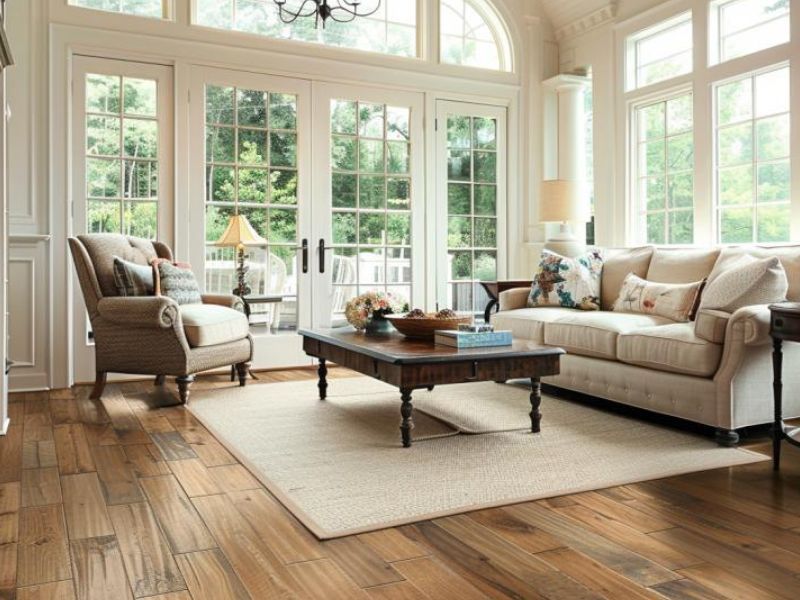Rug Renewal 101: The Complete Guide to Cleaning and Care

Table of Contents
ToggleTLDR: This guide covers rug cleaning methods based on rug types, offering tips for DIY cleaning for different materials. It emphasizes the importance of professional rug cleaning for deep maintenance every 6-12 months and outlines how experts use specialized equipment. Proper maintenance, including vacuuming, spot cleaning, and rug rotation, can extend a rug’s lifespan. Additionally, it recommends protecting rugs from direct sunlight and using rug pads for cushioning and slip prevention to preserve their beauty. Understanding the rug type is essential for choosing the right cleaning method
Step into the world of rug care and discover the secrets to preserving your cherished floor coverings. In this guide, we’ll delve into the art of understanding rug types and the cleaning methods best suited to each. From DIY rug cleaning tips tailored to different materials to knowing when to call in the professionals, we’ve got you covered. Join us on a journey to unlock the beauty and longevity hidden within your rugs, as we share the importance of safe and proper rug cleaning, restoration, and maintenance.
Understanding Rug Types: Which Cleaning Methods Are Suitable?
Understanding rug types is key to ensuring a cleaner rug for longer. Each rug type requires a different cleaning method in order to achieve the best result and one method is not suitable for all. Common rug types and materials include wool, cotton, silk, and jute.
Wool rugs require gentle, careful cleaning as the individual materials are particularly sensitive. As a result, the most suitable cleaning methods for wool rugs are dry cleaning and vacuuming. Dry cleaning will thoroughly remove dirt and deep clean the rug without damaging the fibres, while vacuuming is a laissez-faire method of dust removal.
Similarly, cotton and silk rugs need to be handled with care and require gentle cleaning methods. Hand washing is a suitable option gentle enough to clean without risk of damage. Steam cleaning can also be successful with both types of material. It is essential that the pressure is set to low when using steam to prevent any damage to the fibres.
On the other hand, jute rugs have a much tougher exterior fabric and high-pressure and high-temperature cleaning methods are suitable for efficient dirt removal. Some suitable methods for jute are warm water extraction and, if necessary, pressure washing.
In addition, some rug fabrics and dyes are delicate and require non-chemical treatment. Some cleaning systems may utilize a combination of these methods depending on the rug.
Some methods may be suitable for multiple rug types. Using a PH-neutral detergent is generally suitable for most rug types and will prevent any colour fading or shrinkage. Vacuuming is also a good maintenance-type cleaning option for all types.
Finally, it is essential to assess a rug before deciding on a particular method. The rug materials should be identified as this will affect which cleaning methods are suitable. It is also important that any service provider is skilled and experienced with cleaning the specific rug type.
DIY Rug Cleaning Tips for Different Materials
Generally speaking, the best way to clean a rug depends on the rug’s material. Fortunately, there are numerous tips and tricks for cleaning common rug materials that any owner can do on their own. However, be sure to do research for more specific information about your particular rug material.
For instance, wool rugs, a common and popular rug material, require a different cleaning regimen than other materials. Avoid harsh chemicals and abrasive cleaning tools that can damage wool. Instead, opt for careful brushing with a vacuum and spot treat with a gentle, non-detergent soap mix to get rid of tough stains. Additionally, it is important to avoid too much moisture when cleaning, as wool is prone to shrinking if its material gets saturated.
In contrast, synthetic materials like polyester, nylon and olefin also have a few cleaning regimen rules. Synthetic may shed more easily and thus require more vacuuming. Similar to wool rugs, harsh chemicals and cleaning tools should be avoided as it can damage delicate fibers. Also, spot cleaning with a diluted solution of one tablespoon of white vinegar with one cup of warm water is a safe and effective way to get rid of hard to remove spots or spills.
Cleaning a rug layered with natural materials, such as sisal or jute, requires an even gentler touch of vacuuming and dry cleaning methods. According to the Carpet and Rug Institute, “the best practice for cleaning is using a high-quality natural bristle brush, or very low-speed floor buffer, or dry foam extraction device.” Vacuuming should be done at the lowest setting and no shampoo or wet cleaning should be used on these materials as it can cause rapid deterioration of the fibers and leave a residue.
Some rug fibers like silk may require special attention. Silk is very delicate and must be handled carefully. Most silk rugs should only be vacuumed gently and spot treated with a mild soap and warm water. In addition, rugs of these types should be taken to professional cleaners as often as possible.
Overall, knowing how to clean your rug can extend its life and quality, as well as make it more resistant to fading and staining. Depending on the rug material, you may have to take special steps when cleaning or take it to a professional cleaner to preserve it. Additionally, DIY rug cleaning tips can save you time, stress and money. Consequently, it is important to know how to clean your rug properly.
Professional Rug Cleaning: When and Why to Hire Experts
Professional rug cleaning should be done when an area rug needs a deep, thorough cleaning, preferably once every 6 to 12 months. Such cleaning can help maintain a rug’s beauty and integrity, as well as extend its lifespan. It’s also essential for removing dirt and build-up that regular vacuuming alone can’t take care of.
An area rug that’s visibly soiled or has an odour should be cleaned and deodorised as soon as possible. Pet urine, for example, can saturate rugs and cause permanent damage to the fibres. If it’s not treated quickly and effectively, the cost to replace a rug can be significant.
On the other hand, not all rugs require a professional cleaning. Newer or less heavily trafficked area rugs may not need professional attention for several years. In addition, cleaning materials or methods that are inappropriate for a particular rug can actually cause considerable damage. And, in such cases, the costs of repairing or replacing the rug can easily outweigh the cost of professional cleaning.
For instance, with a professional rug cleaning, sophisticated equipment and advanced cleaning products made specifically for rugs can be utilised. It’s also important to note that such a cleaning should involve a thorough inspection of the rug, followed by a pretreatment of the heavily soiled areas. Hot water extraction and/or a low-moisture deep-cleaning system can then be employed, depending upon the type and condition of the rug.
In contrast, most DIY rug-cleaning solutions or products provide only a superficial level of cleaning and do not include an inspection or pre-treatment of the rug. Going the DIY route with a rug can–if done incorrectly–result in fading, permanent damage to the dye, and a potentially soggy rug. As a result, it’s much more advisable to engage the professional services of a qualified rug cleaning specialist.
Therefore, professional rug cleaning should be seriously considered when cleaning is required. The costs associated should always be assessed relative to the condition of the rug and the potential consequences of doing it yourself. CSeeking out experienced professionals will often be the best way to ensure that a rug is being properly cleaned and restored to like-new condition.
Preserving the Beauty of Your Rugs: Professional Care and Maintenance
Rugs, in all their beautiful designs and colors, can be an eye-catching feature of any room’s décor. As with any textile, however, proper care and maintenance are required in order to preserve the look of your rug. Professional rug cleaning can make a world of difference in bringing back that look of freshness.
Professionals have the right products and tools to clean rugs clean without harsh residues. They are trained to recognize different fabrics and fibers to provide the best treatment for a particular rug, and can even provide services for restoration and repair to extend the life of your rug.
On the other hand, proper maintenance of your own rugs between cleanings is also important. Vacuuming regularly can help prolong the lifespan of your rug by eliminating dirt from the fibers, and spot cleaning any accidental staining can help prevent damage to the rug.
In addition, the placement of your rug is important to consider. Keeping your rug out of direct sunlight is essential to prevent fading, and areas with higher traffic should consider a rug pad for extra cushioning and to prevent slipping.
Make sure to rotate your rugs periodically to keep them wearing evenly. This is especially important when 2 mats are joined together in a larger space, so as not to create two distinct wear patterns.
For instance, flipping the rug 180 degrees every few months, as well as cleaning off your rug every so often and shaking out debris can help keep your rug looking presentable for longer.
As a result, investing in professional care for your rugs on a regular basis as well as following proper maintenance of your own between cleanings can ensure that your rug’s beauty lasts for years to come.
Final Thoughts
Understanding rug types plays a vital role in determining what kind of cleaning method is suitable. In DIY rug cleaning, basic cleaning tips such as vacuuming, spot cleaning and professional deep cleaning must be taken into consideration. For professional rug cleaning, it is important to consider factors such as the type of rug and how often it is used when deciding when to hire experts. The correct and regular care and maintenance must also be taken into account to ensure that a rug maintains its beauty. By properly and accurately assessing the rug and cleaning methods, we can ensure that our rugs are kept in the best condition.
Frequently Asked Questions
Can I clean all types of rugs at home?
No, you should not clean all types of rugs at home. Certain types of rugs, such as oriental, wool, and other delicate rugs may require professional cleaning. If you are not sure what type of rug you have or how to clean it, it’s best to consult a professional for advice.
What are the common rug cleaning mistakes to avoid?
1. Not vacuuming regularly – Vacuuming your rugs on a regular basis can help to remove dirt and debris, which can damage them over time if not taken care of.
2. Using too much water – Too much water can cause your rug to become overly saturated and can lead to mold and mildew growth.
3. Not using the correct cleaning products – Not using a rug-specific product or cleaning solution can cause damage to the rug’s fibers, leading to discoloration or other damage.
4. Not pre-treating spot stains – Before you start to clean your rug, it’s important to pre-treat any spots or stains. This will help to break down the stain and make it easier to remove.
5. Not drying the rug properly – Drying your rug properly can help to prevent mildew and mold growth. Be sure to use a fan or dehumidifier to help the rug dry completely.
How often should I have my rugs professionally cleaned?
It depends on the type of rug you have and the amount of foot traffic they get, but generally experts suggest having them professionally cleaned at least once a year or every other year. For rugs in higher foot traffic areas, such as hallways or living rooms, it is recommended that they be cleaned more frequently, preferably every 6-12 months.
What’s the best way to prevent rug fading and damage?
The best way to prevent rug fading and damage is to control the amount of sunlight exposure the rug receives. Make sure your curtains or blinds are always closed when the sun is brightest and hottest outside. Vacuuming regularly is also important to remove dirt and debris that can cause damage over time. Additionally, using a good quality carpet pad underneath the rug to absorb shock can help it last longer.
Other Blogs You May Be Interested In






Leave a Reply